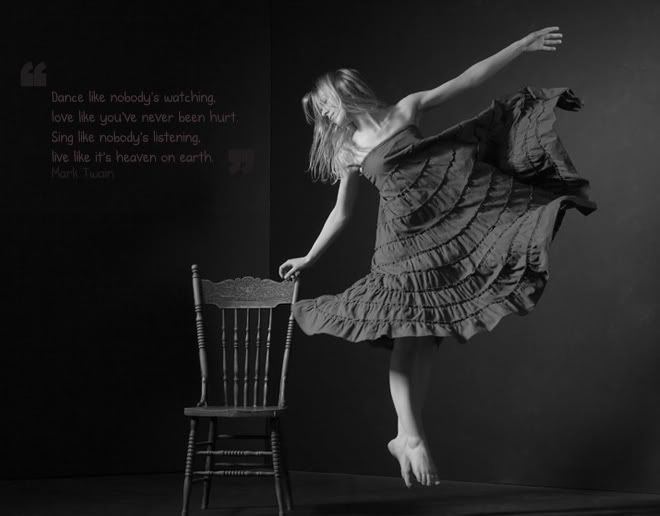

|
The dancer  Joyce Here! I am currently in the Bachelor of Arts in Education Majoring in English Language and I also take Art and Math
Joyce Here! I am currently in the Bachelor of Arts in Education Majoring in English Language and I also take Art and Math
previous posts Multimodality, 'reading' and literacy Multimodal Pedagogies in the Language and Literacy... Youth Participation in Shaping the Textual Landscape i overlooked... Critical Reading in Everyday Life Hybridity and Diversity The Futures of Literacy Some thoughts on Semiotics... Flower past February 2009 March 2009 links .:Aishah:. .:Alen:. .:Bee Bee:. .: Haliah:. .:Hui Ling:. .:Ivan:. .:Kai Ling:. .:Marie:. .:Mei Chen:. .:Natalie:. .:Nazeha'a:. .:Pavani:. .:Sangeetha:. .:Shariffah:. .:Syazwani:. .:Zoie:. .:Jess:.
Credits Base code:OHsaygoodbye Image: Kristi |
Thursday, March 26, 2009 ( Teaching Multiliteracies in the English Classroom @ 11:00 PM ) (A) Anthony Browne’s Voices in the Park. This story presents the four different perspectives of the same incident through a wealthy mother, her lonesome son, an out-of-work father, and his bubbly daughter. (B) I find this book extremely useful to teach pupils to think critically. Through the four different characters, readers are given the opportunity to hear each character’s voice and perspective, thus they are made aware of each character’s attitude towards another and piece together the disconnected understandings of the visit to the park. The illustrations that accompany the text complement it and effectively reflect the personalities of each character. Issues such as gender, class and prejudice are explored in a clever and interesting manner and as teachers, we can extend it through discussion with our pupils. We can discuss these issues within the context of the story and later, expand it to the Singapore context. Furthermore, the story is presented with multiple perspectives and this allows readers to decide for themselves whose voice is the most credible. (C) Pupils might not be able to pick out all the critical nuances immediately as they might not be used to reading from a critical perspective. Thus, it is necessary for teachers to scaffold them with questions to lead them in. If possible, teachers could also start with simpler texts like Cinderella or Sleeping Beauty and discuss gender stereotypes (women tend to be portrayed as the weaker sex in contrast to the prince who saves them) before moving on to this Voices in the Park. 2 comments ( Multimodality, 'reading' and literacy @ 10:59 PM ) “the affordances of new technologies reconfigure the multimodal aspects of reading and writing in ways that are newly significant for reading” (C.Jewitt, 107). This line made a lot more sense after the activity we did in class and here are some of my thoughts. I view countless of website on a daily basis (I’m sure all of us do) but I have never thought about my reading path. Indeed, the images presented in the websites are a critical tool to get me interested to want to go on reading. I make sense of the images and decide if it is worth my time and effort to continue reading or viewing the website. There are countless of websites on the worldwide web and as a viewer, simply by a click of a button, I’m in a totally different space. Thus, visuals are an extremely important feature to capture the viewer. 0 comments Wednesday, March 11, 2009 ( Multimodal Pedagogies in the Language and Literacy Classroom @ 11:56 PM ) Indeed, Language and Literacy education aims to empower students and provide them with a platform for the articulation of their ideas. However, educators must understand the cultural and social backgrounds of their students and how it affects (advantaged or disadvantaged) them. With this knowledge, educators can better incorporate pedagogies that aid in meaning making into their teaching. Furthermore, educators must learn to realise and understand that “learners can be offered a choice of silence in the same vein as a choice to speak” (Stein, pg. 109). Silence in the classroom is usually less valued than articulateness and eagerness to participate in classroom discussion. This silence, normally associated with the lack of knowledge or clarity, is generally frowned upon. However, silence does not necessarily indicate ignorance or disinterest in the lesson. I find myself guilty of having such notions about silence too. In the classroom, the vivacious and eloquent students tend to receive more attention and are “expected” to “perform” during assessments. However, the students who are more passive and restrained are more likely to be forgotten. According to Stein (pg. 109), this silence should not be spurned as it is “participatory, affirmative, and productive rather than oppositional and resistant”. I have not looked at it from this perspective and it was a great revelation (a very strong word? Yes, it opened my eyes to a whole different view) for myself. Before, I viewed silence as a mere demonstration of deference and respect towards the teacher. When I was a student, we were expected to keep quiet and absorbed everything the teacher said. Challenging or questioning the teacher was discouraged as it displayed a lack of respect and parents would tell their children, “Just listen. Your teacher is right.” However, due to the changing education landscapes, talk is now encouraged and in turn, relegating silence. Thus, through the implementation of multimodal pedagogies into our teaching framework, silence would be valued as “a mode of communication [that] has the materiality of sound without volume” (Stein, pg. 109). This silence serves to include and not exclude or threaten thus allowing “a positivity and presence of being.” 2 comments ( Youth Participation in Shaping the Textual Landscape @ 10:31 AM ) I think most importantly, we have to get the students to explore the “categories” present in our society. They also need to identify the labels and stereotypes that are associated with these particular “categories” and decide if they have factual basis or are mere hearsay. However, before they get started on exploring these “categories”, I would ask them to list their identity on a piece of paper. They are to pen down their personal views about themselves as well as their interests. After which, they are to put it aside and not look at it. Then, they would identify the “categories” present in Singapore’s society. With these “categories”, they would be asked to share the stereotypes and views of the people who belong to each individual “category”. After which, they will identify the category that they have been made to believe they belong to. With these information, they are to answer the following questions, 1) How do you fit into this category? 2) How are you a misfit? 3) Compare the identities you have written about yourself with those of the “category” others have put you into. How different are you? I believe that through this exercise, they would have a better understanding of themselves and recognise that they are individuals not subjected to the views of this world. 0 comments |